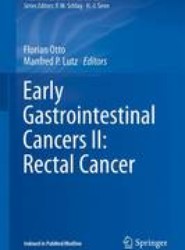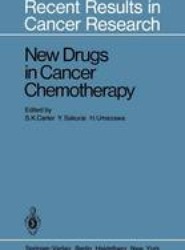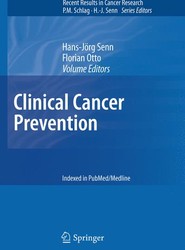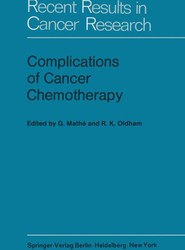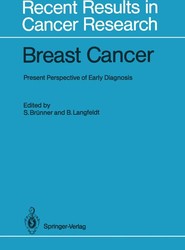(To see other currencies, click on price)
MORE ABOUT THIS BOOK
Main description:
Trials in the treatment of the leukemias are sometimes based on a hypothesis, as in the case of exchange transfusion [33] or the use of antimetabolites [86]. Or they are conducted empirically as the results of chance observations, as in the case of the use of the nitrogen mustards, urethane, and the Vinca alkaloids. Or they lie between the two, aiming at making use of well established biological facts: examples are the use of ACTH, cortisone and, more recently, the antibiotics. What is true for bacteria may also perhaps be true, if not for elephants, at least for the malignant cells of mammals. It was this idea that lay behind the first attempts at treating cancer and leukemia with antibiotics. The results obtained by the use of certain substances extracted from micro-organisms (actinomycin, azaserine, mito mycin, rufocromomycin), although encouraging at times, were inconsistent. The action of rubidomycin appears to cover a wider spectrum and to be more consistent and more effective. As in the case of Homer and Christopher Columbus, the honor of having given birth to rubidomycin is claimed by more than one country and town. In fact, the same product was discovered in the same year, though quite independently, by a group of French workers [184] who described it under the name of rubidomycin, and by a group of Italian workers [87] who studied it under the name of daunomycin.
Contents:
History of Rubidomycin.- The First Antimitotic Antibiotics.- Isolation of Rubidomycin.- The First Clinical Trials.- The First Overall Surveys.- I - Preparation and Experimental Investigation.- 1: Preparation.- 1. Production.- a) Productive Strains.- b) Production in Fermenters.- 2. Isolation.- a) Extraction of the Crude Base.- b) Fractionation by Counter-current Distribution.- 3. Analytical Methods.- 4. Physicochemical Properties.- a) Solubility.- b) Stability.- c) Properties.- d) Comparison of Rubidomycin and Rubomycin C on the Basis of their Physicochemical Properties.- 5. Tritiated Rubidomycin.- a) Preparation.- b) Analytical Results.- 2: Structure.- 3: Biological Activity.- 1. Cytostatic Activity and Cell Changes.- a) KB and HeLa Cells.- ?) Cytostatic Activity.- ?) Cell Changes.- b) Ehrlich Ascites Cells.- ?) Cytostatic Activity.- ?) Cell Changes.- c) Plant Cells.- 2. Antitumor Activity in Animals.- a) Tumors of Mice.- ?) Carcinomas.- ?) Ehrlich Ascites Tumor.- ?) Sarcomas.- ?) Leukoses and Leukosarcomatosis.- b) Tumors and Leukemia of Viral Etiology.- ?) Avian Sarcomas.- ?) Shope Fibroma.- ?) Rauscher Leukemia.- 3. Immunodepressive Activity.- a) Effect on the Production of Antibodies.- b) Action on Immunologically Active Spleen Cells.- c) Action on Grafts.- d) Action on the Lymphoblastic Transformation of Lymphocytes in vitro.- 4. Antibacterial Activity.- 5. General Pharmacological Properties.- a) Effect on the Cardiovascular System.- ?) Effect on the Arterial Pressure.- ?) Effect on the Heart.- b) Effect on Respiration.- c) Effect on the Sympathetic Nervous System.- 4: Fixation in the Cell and Mechanism of Action.- 1. Fixation in the Cell.- a) Autoradiography of KB Cells.- b) Measurement of the Tritiated Rubidomycin in Normal Hepatic Cells.- c) Fluorescent Microscopy (KB Cells).- 2. Mechanism of Action.- a) Action on Energy Metabolism.- ?) Method of Study.- ?) Results.- b) Action on Protein Synthesis.- ?) Method of Study.- ?) Results.- c) Action on the Synthesis of Nucleic Acids.- ?) Staining of the Cells with Acridine Orange.- ?) Autoradiographic Study of the Incorporation of Tritiated Thymidine and Uridine into the Treated Cells.- ?) Determination by Measurement of the Incorporation of Tritiated Thymidine and Uridine in the Nucleic Acids of Ehrlich Ascitic Tumor Cells.- 5: Toxicology.- 1. Acute Toxicity and Subacute (5 Days) Toxicity.- a) Method of Study.- b) Results.- ?) Acute Toxicity.- ?) Subacute Toxicity.- 2. Long-term Toxicity (3 Months).- a) Method of Study.- b) Results.- ?) Trials on Rabbits.- ?) Trials on Dogs.- 3. Teratogenic Action.- a) Chick Embryo.- b) Mice.- c) Rabbits.- d) Conclusion.- 4. Carcinogenic Effect.- a) Material and Method.- ?) Subcutaneous Administration.- ?) Oral and Intraperitoneal Administration.- b) Results.- ?) Subcutaneous Administration.- ?) Oral and Intraperitoneal Administration.- c) Conclusion.- II - Clinical and Therapeutic Study.- 6: Posology.- 1. Dosage with Rubidomycin.- 2. Presentation of Rubidomycin.- 3. Route of Administration.- 4. Dosage.- 5. General Management of Treatment. Precautions.- a) Symptomatic Treatment.- b) Place of Treatment.- c) Special Treatment of Hyperleukocytic Forms and Very Active Multiple Drug Therapy.- 6. Symptomatic Treatment.- a) Isolation.- b) Platelet Transfusion.- c) Bacterial Infections.- ?) Antibiotic Treatment before the Stage of Aplasia.- ?) Antibiotic Treatment during the Stage of Aplasia.- ?) Minimum Inhibiting Concentration.- ?) Choice of Antibiotic. Concept of Bactericidal Power.- ?) Antibiotic Combinations.- ?) Problems of Fungal Infections.- ?) Duration of Antibiotic Treatment.- d) Leukocyte Transfusions from Donors with Chronic Myeloid Leukemia at the Myelocytic Stage.- 7: Therapeutic Episodes and Accidents.- 1. Marrow Insufficiency.- a) General Characteristics.- b) Special Characteristics.- 2. Cardiac Complications.- a) Cardiac Complications Observed during and after Lengthy Treatment.- b) Cardiac Complications Observed during Less Prolonged Treatment.- c) Conclusion: Treatment and Attempted Prevention of Cardiac Complications.- 3. Other Complications.- a) Local Complications.- b) Miscellaneous Complications and Accidents.- 8: Treatment of Acute Lymphoblastic Leukemia with Rubidomycin Only.- 1. Preliminary Remarks.- a) Techniques Employed in Hematologic Diagnosis.- b) Definition of Complete Remission.- c) Preliminary Observations.- 2. Dosage.- 3. Study of a First Personal Series.- a) Results.- b) Frequency of Remission.- c) Complete Remission. Chronology, Quantitative Changes.- d) Incomplete Remissions.- e) Partial Failures (11 Cases).- ?) Aplasia without Blast Cells.- ?) Aplasia with Persistance of Blast Cells.- f) Total Failure.- g) Duration of Remissions.- h) Complications Caused by Rubidomycin.- 4. Two Examples of Rubidomycin Used Alone.- 5. Overall Results. Effect of Rubidomycin Alone on the Course of Acute Lymphoblastic Leukemia.- 9: Acute Granulocytic Leukemia. Acute Myeloblastic and Promyelocytic Leukemia.- 1. Preliminary Observations.- 2. Dosage.- 3. Study of a First Personal Series.- a) Patients Treated.- b) Time of Complete Remission.- ?) Average Interval.- ?) Short Interval.- ?) Long Interval.- c) Duration of Complete Remission.- d) Incomplete Remissions.- e) Failures.- 4. General Survey. General Features of the Course of the Disease. Prognosis.- a) Age.- b) Type of Leukemia.- c) Hospital Organization.- d) Experience of the Hematologist.- e) Comparison of our Personal Series with the Results Obtained by Other Workers.- ?) General Causes.- ?) Special Difficulties.- 5. General Indications.- 6. Acute Promyelocytic Leukemias.- 7. Acute Monoblastic Leukemia.- 10: Combination Therapy in the Treatment of Acute Leukemia.- 1. General.- a) The Simultaneous Use, or the Use at Very Short Intervals, of Four Main Drugs.- b) The Sequential or Iterative Method.- c) The Reinduction Method.- 2. Combination Therapy and Properties of Rubidomycin.- 3. Acute Lymphoblastic Leukemia.- a) Use of Rubidomycin, Vincristine, and Prednisone in Combination.- b) Induction Treatment.- c) Maintenance Treatment and Reinductions.- d) Patients Treated.- e) Results.- ?) Overall Results.- ?) Inducement of Complete Remission (117 Cases).- ?) Duration of Remissions.- f) Tolerance.- ?) The Initial Phase.- ?) Adjustment of Therapy.- ?) Tolerance of Reinduction.- g) Conclusion.- h) Treatment of Relapses.- i) Other Trials.- k) Other Combinations Used in Treating Acute Lymphoblastic Leukemia.- 4. Acute Granulocytic Leukemia.- a) Initial Combination of Rubidomycin with Other Drugs.- b) Prolongation of Complete Remission.- 11: Cytological and Immunological Study of Acute Leukemia Treated with Rubidomycin.- 1. Cytological Study.- a) Acute Lymphoblastic Leukemia.- b) Acute Granulocytic Leukemia.- 2. Immunodepressive Power of Rubidomycin.- a) Studies in Animals.- b) Studies in Man.- ?) Effect on the Production of Circulating Antibody.- ?) Effect on Delayed Hypersensitivity Reactions.- 12: Treatment of Chronic Leukemia, Sarcoma, Hodgkin's Disease, and Cancer with Rubidomycin.- 1. Chronic Leukemia.- a) Chronic Myeloid Leukemia.- b) Chronic Lymphoid Leukemia.- 2. Sarcoma of the Hemopoietic Organs.- a) Lymphoblastosarcoma.- ?) Rubidomycin Used Alone.- ?) Rubidomycin Used in Combination with Other Drugs.- ?) Complete Remissions.- ?) Incomplete Remissions.- ?) Failures.- ?) Tolerance.- ?) Discussion.- b) Reticulosarcoma.- 3. Hodgkin's Disease.- 4. Myeloma.- 5. Solid Tumors.- a) Neuroblastoma.- b) Rhabdomyosarcoma.- c) Cancer.- d) Intra-Arterial Route.- Conclusions.- References.
PRODUCT DETAILS
Publisher: Springer (Springer-Verlag Berlin and Heidelberg GmbH & Co. K)
Publication date: July, 2013
Pages: 183
Weight: 355g
Availability: Not available (reason unspecified)
Subcategories: Oncology, Pharmacology
From the same series
Friedhelm Raue
Thomas Ried
Christian Wittekind
Florian Otto
Markus W. Buchler
C. Stroszczynski
Manfred Dietel
H.-J. Senn
Otmar Schober
Jean-Nicolas Vauthey
Elmar Detering
Richard P. Baum
G. Mathe
R. Gross
Florian Otto
Uwe M. Martens
Michail Ignatiadis
Georges Mathe
M. S. Griem
Jack Cuzick
Michael Gnant
Ute Goerling
Hans-Jorg Senn
Werner H. Kirsten
F.A. Langley
Kuan-Teh Jeang
Janusz Jankowski
Thomas Moehler
Andrea Tannapfel
S.K. Carter
R. S. Nelson
Kerry S. Courneya
Rolf D. Issels
Hans-Jorg Senn
Florian Otto
W. Fischbach
Umberto Veronesi
Otmar Schober
Paul M. Schneider
Hans-Jorg Senn
Wolfgang Tilgen
Jean-Nicolas Vauthey
Richard P. Baum
J. L. Hayward
W. H. Kirsten
Henry T. Lynch
Georges Mathe
G. T. Pack
Leon Goldman
Charles G. Moertel
R.G. Freeman
L. Manuila
Agnes Glaus
Rudiger Liersch
Richard Schindler
Uwe M. Martens
W.A. Fuchs
Michail Ignatiadis
Edward S. Meek
P. Roy-Burman
Merle Mizell
Jean Lindenmann
Pavel Koldovsky
Enrico Anglesio
Georges Mathe
Hans-Jorg Senn
James H. Goldie
Donald Metcalf
Siegfried Seeber
Israel Penn
B. Sokoloff
Manfred Schwab
E. Grundmann
H.-D. Pape
Robert S. Nelson
G. Mathe
J. Lange
G. Bonadonna
J. Szymendera
H. B. Marsden
K. E. Stanley
E. Grundmann
C. Bohuon
Pierre Denoix
A. C. Templeton
Ekkehard Grundmann
Michael Wannenmacher
Ivan Damjanov
Wolf-Dieter Ludwig
Friedhelm Raue
M. L. Jacobs
H.K. Muller-Hermelink
Rita Engenhart-Cabillic
E. Grundmann
Peter M Schlag
E. Grundmann
Ekkehard Grundmann
G. Mathe
Donald Metcalf
S. Brunner
F. F. Holmes
G. Mathe
G. Mathe
Pierre Band
Stephen C. Schimpff
K. Schwemmle
Michael Gnant
K. Hoffken
Friedhelm Raue
H. R. Scheurlen
Aron Goldhirsch
H. Acker
Hans-Jorg Senn
F. G. J. Hayhoe
William Duncan
E. Thiel
Hans-Jorg Senn
K. Musshoff
Hans-Jorg Senn
A. Rossi-Fanelli
Peo C. Koller
Volker Diehl
K. Hoffken
H.-J. Senn
Bruce S. Schoenberg
G. St. Arneault
S.K. Carter
B. Henningsen
J. Hekmatpanah
G. Mathe
E. Grundmann
Hans-Jorg Senn
G. Mathe
Sam Brunner
Hans-Jorg Senn
V. Hofmann
Michael Wannenmacher
G. Wagner
Hans-Jorg Senn
Rudolf Pichlmayr
Frank M. Torti
Michael Wannenmacher
William Duncan
G. Mathe
M. Bamberg
H.-P. Lohrmann
E. Grundmann
Niels Neymark
Peter M Schlag
P. Koldovsky
G. Nass
W. Duncan
Ekkehard Grundmann
Richard P. Gallagher
Hans-Jorg Senn
W. Duncan
W. Duncan
S.K. Carter
Michael Molls
Sam Brunner
Peter Boyle
Maurizio Ponz de Leon
U. Reinhold
Gunter Burg
K. Hoffken
H.-J. Senn
F.W. Schildberg
Beat Thurlimann
Janusz Jankowski
Thomas Moehler
Andrea Tannapfel
Kerry S. Courneya
H.-J. Senn
Per-Ulf Tunn
Andreas von Deimling
Antonella Surbone
Ursula Kapp
Hans-Jorg Senn
Santiago Gonzalez-Moreno
Hanno Riess
Paul M. Schneider
Uwe M. Martens
Rudiger Liersch
Renzo Brun del Re
Andreas von Deimling
Ursula Kapp
Per-Ulf Tunn
Hanno Riess
Antonella Surbone
Manfred Dietel
Santiago Gonzalez-Moreno
Louis Denis
H.-J. Senn
C. Stroszczynski

















